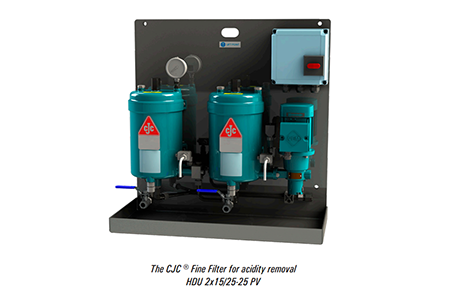The cost of removing dirt from the oil can be expensive. It could be hundreds of thousands of dollars per year for large plants and fleets operating in dusty environments.
But, contamination control is optional. That said, there are still a few options to get the most cleanliness for the fewest filtration dollars where quality filtration is needed. Below are some of the ways you can manage filtration system costs:
Stop the Ingress
When filters are not clogged with particles, they last longer. Thus, the best strategy is working backward by tracing the particle ingression pathway.
Perform a walk-around inspection from the standpoint of ingression, then start the exclusion process by blocking these free-pass entry points.
Select Filterable Oil
Another way is to consider testing the filterability of your oil, especially if you plan to filter at five microns or below. Even if your new lubricants are clean, they may be nonfilterable.
Several contributing factors cause poor fluid filterability. Many new lubricants, for example, may include soft, organic contaminants or metal soaps that contribute to early filter clogging. Some filterable materials may be undissolved or stringy polymeric additives that restrict flow through fine pore-size filter media.
Another possibility is old oils with an increasing population of tiny particles that remain undetected by standard particle counting or microscopic analysis. While these particulates may be smaller than the mean pore of your filter medium, a secondary and tertiary flow restriction mechanism might cause the filter to get clogged with particles that were never meant to be removed. Often, an oil change may be cheaper than filtration.
Undissolved moisture can also shorten a filter's life. Water tends to enter the pores of cellulose media or adsorb onto the filter media fibers. Water can reduce filter life and compromise the structural integrity of the filter media. Water also contributes to the oxidation and hydrolysis of the oil, which can produce gums and resins, leading to filter plugging.
All the difficulties stated above may be exacerbated by cold oil filtering. What was dissolved often becomes undissolved when the oil is cold. In specific systems, the greater viscosity of cold oil may also trip a filter replacement signal.
Select Economy Filtration
This approach is divided into two parts: economic filters and economic filtration. Filter size, media type, and dirt-holding capacity are all factors to consider when choosing a cheap filter. Economic filtration concerns the system and its working circumstances, such as flow density, pressure, position, number of filters, and centrifuges.
Following are some of the factors and conditions that, with few exceptions, improve the filter and filtration economy.
Low Filter Pressure
Spin-on filters and even disposable cartridge filters built for high-pressure systems often cost more than most low-pressure filters for the same dirt-holding capacity.
Oversized Filters
The lower the oil's flow rate relative to the greatest allowable element flow rate, the better the filter economy. This is also known as flow density. For instance, doubling the size of a filter may triple the dirt-holding capacity but may cost less than twice the price.
Warm Oil Filtration
Arranging filters upstream of heat exchangers can also extend service life. The lower viscosity of the warm oil enables the oil to flow faster through the filter media, delaying the time to reach the terminal pressure drop. But, high oil temperatures present many other challenges, such as premature oxidation.
Change Filters on Time
Finally, hanging a filter too late jeopardizes the oil and machine. Often changing filters wastes essential resources. Besides the cost of the filter, there are extra costs for labor, inventory, scheduling, used filter disposal, waste oil disposal, and oil top-off costs.
Several technologies are available to help enhance the time of a filter change. Among them are pressure-rise profile monitoring, delta-P indicators, bypass indicators, on-line particle counting, and time-out alarms. In some instances, combining many strategies may be the best option. Nonetheless, changing filters on condition should be the primary goal in the quest for a filter economy.
Filters are consumable machine components. They have two primary jobs: remove particles at the same rate they arrive into the oil and protect sensitive machine components from contaminant invasion.
Clean Oil Solutions

Adequate contamination control systems improve machine performance and reliability and extend component life while lowering operation and maintenance costs. Keep your oil clean with Le Price International's desiccant breathers, filtration systems, and other clean oil solutions.
Source:
Fitch, J. (n.d.). Insider Tips on Managing the Costs of Lubricant Filtration. MachineryLubrication. Retrieved from https://www.machinerylubrication.com/Read/746/filter-filtration-costs
































